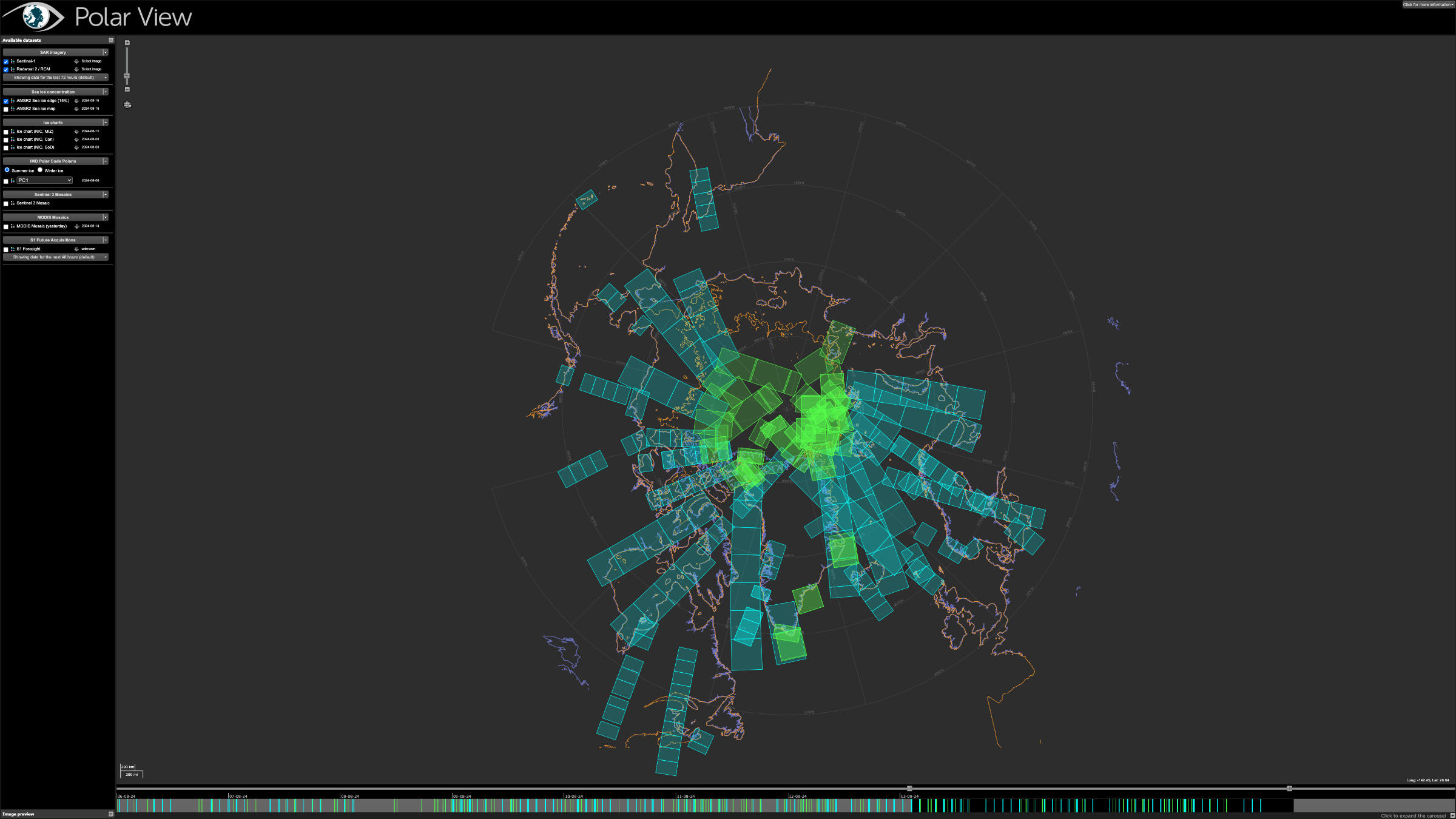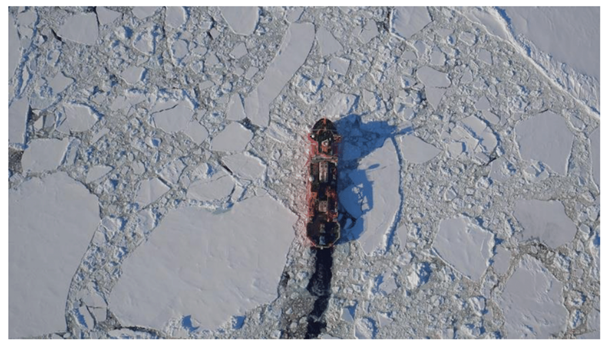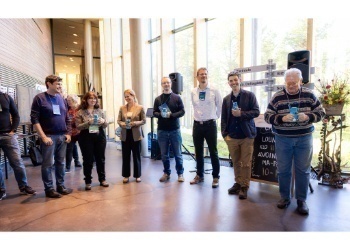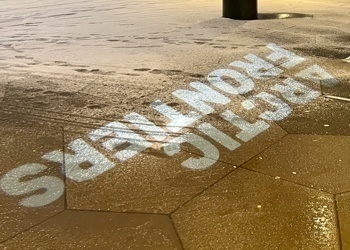Improving safety for shipping in the Polar Seas (POLARIS)
Lead: Andrew Fleming, British Antarctic Survey
past and future
The Arctic Shipping service has completed an historical analysis of risk for ships operating in the global Arctic from 2015-2022. This included just over 2000 unique vessels operating in the region, of which 1,400 operated in ice infested waters. While the results should not be viewed as an evaluation of compliance or non-compliance due to the scientific limitations involved in the approach, the analysis is a good proxy for the relative levels of ‘risk’ emerging among operational vessels in the Arctic over this time period. The results of this analysis will be published in the coming months, but an initial summary and maps are available in the story map about the Arctic Shipping service.

The Polar View Arctic portal which will be used in the future for access to POLARIS forecast products.
The POLARIS risk forecasting services delivered by the Danish and Finnish meteorological institutes (DMI and FMI) are now operational and being evaluated. We have conducted live service demonstrations onboard two vessels to test the service and gather feedback from ship crews, with further demonstrations planned in the coming months. Further information about the forecasts and demonstrations available in the story map about the service (link above).
 Photo by Andrew Fleming.
Photo by Andrew Fleming.
Partners:
METNO FMI DMI AWI UKRI-BAS PAME Norwegian Coastal Administration AKER ARCTIC Lloyds Nautical Institute
News highlights

15
Jul, 24Arctic PASSION at the 2024 European Polar Science Week
Find out which Arctic PASSION-led sessions you can attend at the 2024 European Polar Science Week Read More- by: Sabrina Heerema
- Updated: 15 Jul 24

25
Jun, 24Arctic PASSION Innovation Exhibition
Arctic PASSION hosted an Innovation Exhibition at our 2024 General Assembly in Inari/Aanaar, Finland in June Read More- by: Sabrina Heerema
- Updated: 25 Jun 24

02
Feb, 24Arctic PASSION at Arctic Frontiers 2024 recap
An update of Arctic PASSION's presence at the 2024 Arctic Frontiers event Read More- by: Sabrina Heerema
- Updated: 31 Jan 24

22
Dec, 22Arctic PASSION at SMM
Read Janet Pawlak and Heïdi Sevestre's summary of Arctic PASSION's participation on the leading international maritime trade fair (SMM) earlier this year. Read More- by: Janet Pawlak …
- Updated: 07 Feb 23
